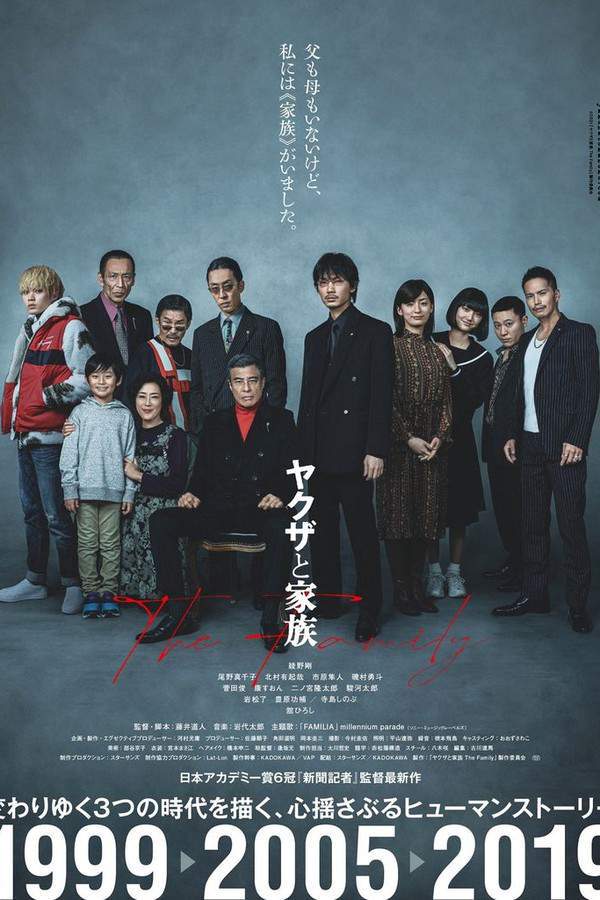
A Majority of One
Year: 1961
Runtime: 156 mins
Language: English
Director: Mervyn LeRoy
A vibrant screen adaptation of the beloved stage hit, it follows a gentle romance between a Japanese widower businessman and a Brooklyn widow. As they fall for each other, both must confront cultural differences and past sorrows, rediscovering tolerance, kindness and forgiveness before they can embrace a happy future.
Warning: spoilers below!
Haven’t seen A Majority of One yet? This summary contains major spoilers. Bookmark the page, watch the movie, and come back for the full breakdown. If you're ready, scroll on and relive the story!
A Majority of One (1961) – Full Plot Summary & Ending Explained
Read the complete plot breakdown of A Majority of One (1961), including all key story events, major twists, and the ending explained in detail. Discover what really happened—and what it all means.
Bertha Jacoby, Rosalind Russell, a widow from Brooklyn, agrees to leave her familiar urban life after her daughter Alice Black, Madlyn Rhue, urges her to move to Tokyo so she can be near Alice and her husband Jerry Black, Ray Danton, who are stationed at the American embassy there. The plan is presented as a practical step for family unity, yet Bertha’s past wounds run deep—she has never fully recovered from the pain of her son’s death in World War II, a memory that haunts the idea of starting anew in a distant country. Alice and Jerry, who picture themselves as liberal and open-minded, still show a sharply polite arrogance toward Essie Rubin, Mae Questel, Bertha’s friend who worries that their Brooklyn neighborhood is being reshaped by ethnic minorities. Essie’s concerns are brushed aside by the couple, highlighting a friction between progressive self-image and unspoken biases.
On the voyage to Tokyo, Bertha encounters Koichi Asano, Alec Guinness, an affable and influential Japanese Buddhist businessman who is central to Jerry’s diplomatic circle. His courtesy contrasts with Bertha’s cool reserve as they navigate the chasm of mutual suspicions. Asano speaks honestly about loss, revealing that he, too, has carried grief: a son whose ship was destroyed by a dive bomber and a daughter who worked as a nurse in Hiroshima. His openness invites Bertha to see beyond her wounds, suggesting that shared sorrow can bridge cultural divides.
A quiet shift unfolds as Bertha and Asano receive one another with growing warmth, each finding in the other a kindred loneliness born of recent bereavement. They form an easy companionship, and Bertha’s guarded posture begins to soften—an evolution noticed by those around them. At a party, their dancing together signals a new closeness, though Jerry suspects a risk to his diplomatic mission, and Alice warns Bertha to avoid becoming entangled with someone who could sway her husband’s work and judgment. Asano senses Bertha’s renewed interest and offers thoughtful gestures, including gifts and social invitations, and he asks permission to court her with the gravity such a relationship deserves.
Bertha’s children weigh in with their concerns, opposing the idea of an interracial union and reproaching Essie’s earlier prejudices as they voice discomfort about the possibility of their mother forming a bond with a Japanese man. Bertha challenges the hypocrisy she sees, reminding them that prejudice is a two-edged blade and that judging others often reflects unresolved fear. The conversation leaves room for cautious optimism rather than certainty, and Bertha and Asano agree to proceed slowly, keeping their connection alive across the miles and through the realities of travel and diplomacy.
Time in New York follows, and a reunion reveals that enough moments have passed for them to consider a future together more openly. Asano accepts a post at the United Nations, signaling a path that could bring them closer in a world where cross-cultural partnerships are increasingly possible. The film paints a measured portrait of loneliness, resilience, and the slow work of healing, illustrating how two people might choose to navigate grief, prejudice, and the pull of companionship across national lines.
Last Updated: October 09, 2025 at 12:31
Unlock the Full Story of A Majority of One
Don't stop at just watching — explore A Majority of One in full detail. From the complete plot summary and scene-by-scene timeline to character breakdowns, thematic analysis, and a deep dive into the ending — every page helps you truly understand what A Majority of One is all about. Plus, discover what's next after the movie.
A Majority of One Timeline
Track the full timeline of A Majority of One with every major event arranged chronologically. Perfect for decoding non-linear storytelling, flashbacks, or parallel narratives with a clear scene-by-scene breakdown.

Similar Movies to A Majority of One
Discover movies like A Majority of One that share similar genres, themes, and storytelling elements. Whether you’re drawn to the atmosphere, character arcs, or plot structure, these curated recommendations will help you explore more films you’ll love.
Explore More About Movie A Majority of One
A Majority of One (1961) Scene-by-Scene Movie Timeline
A Majority of One (1961) Movie Characters, Themes & Settings
A Majority of One (1961) Spoiler-Free Summary & Key Flow
Movies Like A Majority of One – Similar Titles You’ll Enjoy
Drive My Car (2021) Film Overview & Timeline
A Family (2021) Film Overview & Timeline
My One and Only (2009) Story Summary & Characters
Playing by Heart (1999) Full Movie Breakdown
Chinaman (2005) Full Summary & Key Details
A Desirable Marriage (1991) Story Summary & Characters
Theatre: A Love Story (2020) Spoiler-Packed Plot Recap
Mom, Is That You?! (2023) Spoiler-Packed Plot Recap
Late Autumn (1960) Plot Summary & Ending Explained
Tokyo Story (1953) Film Overview & Timeline
The Wedding Banquet (1993) Full Summary & Key Details
Passing Fancy (1933) Full Movie Breakdown
The Harimaya Bridge (2009) Spoiler-Packed Plot Recap
Everything Will Be All Right (1995) Film Overview & Timeline
Rental Family (2025) Spoiler-Packed Plot Recap

















